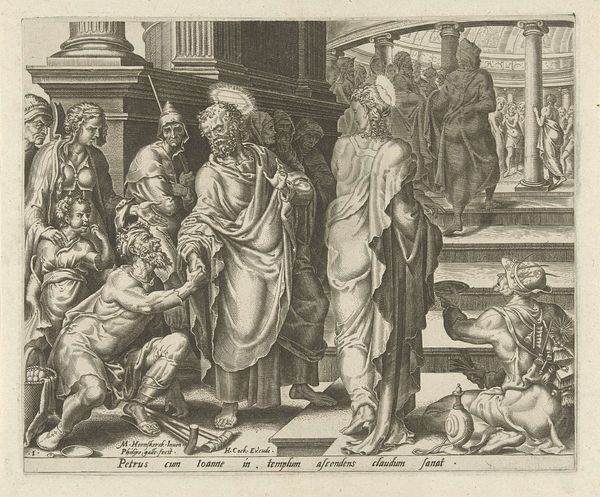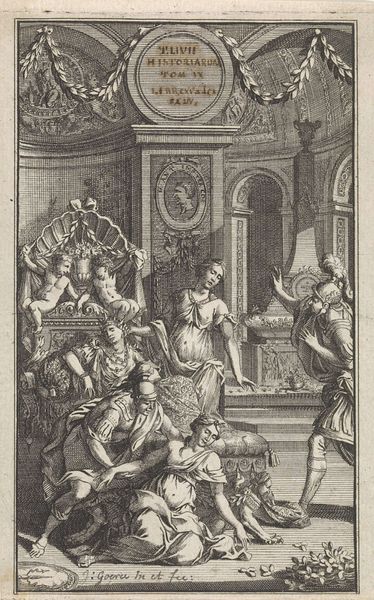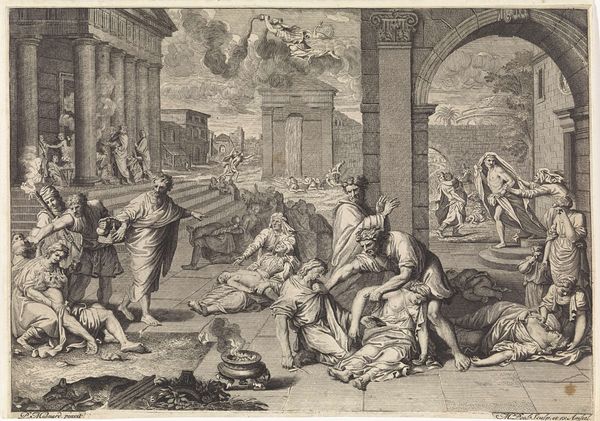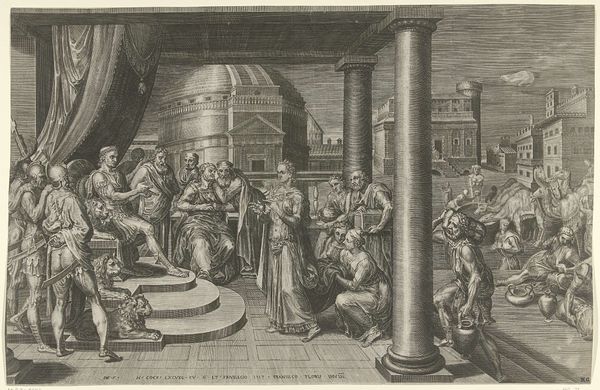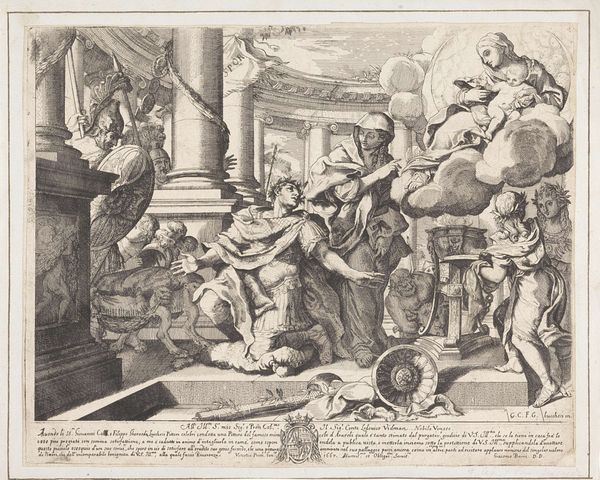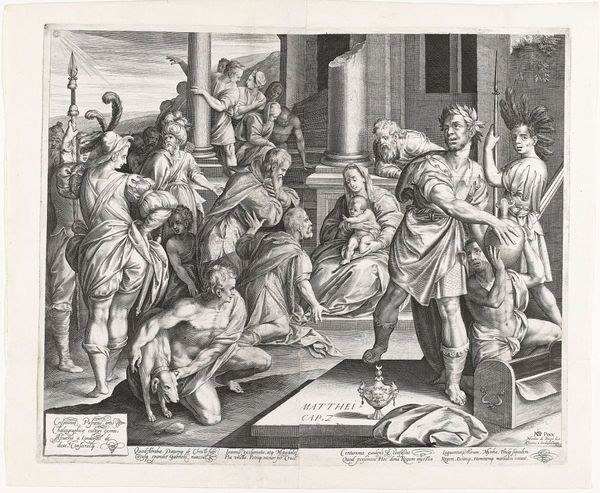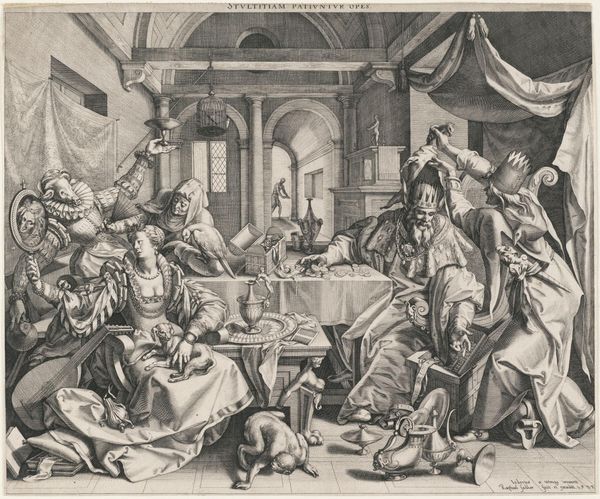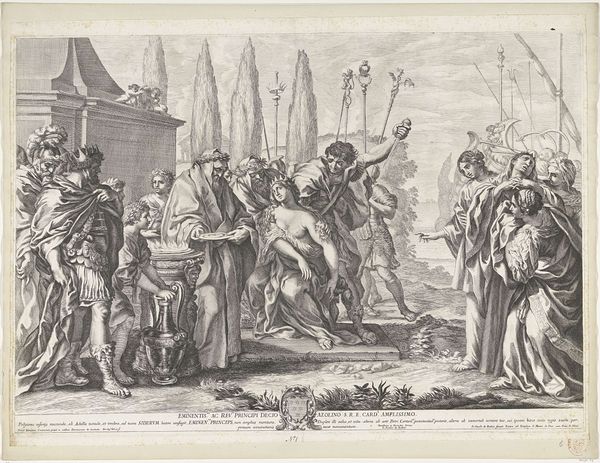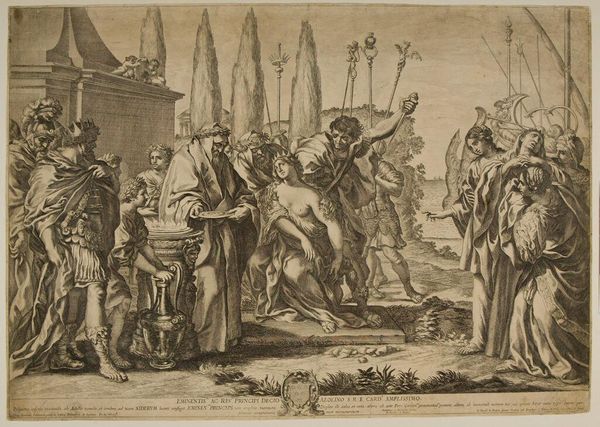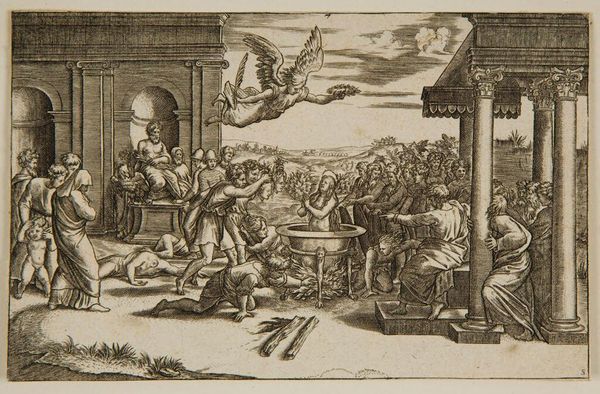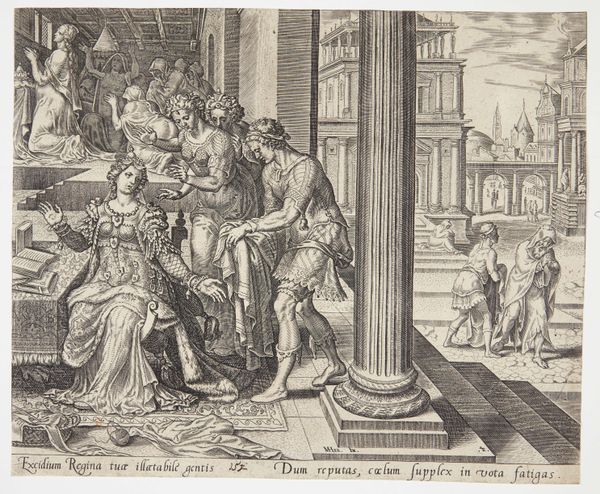
print, engraving
#
baroque
# print
#
classical-realism
#
figuration
#
history-painting
#
academic-art
#
engraving
Dimensions: height 461 mm, width 665 mm
Copyright: Rijks Museum: Open Domain
Curator: "Tekenacademie," dating from 1686 to 1740, and realized by Francesco Faraone Aquila, depicts what seems to be a lively gathering, perhaps within the walls of a drawing academy itself. The technique used to create it is engraving. What impressions arise for you when viewing this piece? Editor: The eye is immediately drawn to the flurry of activity and the range of figures. The almost staged drama within the image, particularly the lone standing male nude figure, invokes classical sculpture and notions of ideal beauty. It certainly evokes both a sense of dynamism and a very theatrical scene, and yet something else entirely... Curator: I agree; that staged aspect points to its social context. These academies sprung up to codify art production and reinforce established hierarchies. The heroic male nude statue, elevated, literally embodies those classical ideals academies sought to instill. One can imagine that the setting has to represent the peak of society during that period. Editor: Absolutely. This depiction leans heavily into well-established artistic symbolism. Consider the light and shadow. Observe the seated figures diligently sketching. There’s this potent emphasis on disciplined learning, almost a reverence for artistic tradition, which can either elevate your mind or create constraints on one's soul! Curator: Exactly, and look how the inclusion of architecture adds to this discussion. Notice how classical elements frame the activities and reinforce that period’s emphasis on order. What can you deduce in terms of composition from those figures? Editor: Interesting, while figures in the foreground are meticulously drawing the male statue on a plinth to its left, those in the background either discuss something by whispering among themselves or look somewhat disoriented. It all resembles a class and how one might either succeed or not. One point in particular has piqued my interest: this particular individual lying almost helplessly under a table. Any possible theories on this representation? Curator: That element makes an essential social commentary; such depictions emphasized the pursuit of ideal forms as central to elevating society. However, not everyone had equal access to these spaces, creating inherent socio-economic exclusions that are not shown here explicitly. It presents an environment filled with hope and possibilities. Editor: This print leaves me with a sense of art-making at the cross-section of tradition and aspiring intellectual heights, where not all roads led to success or completion, though. It still raises so many questions to reflect upon further! Curator: I agree. It speaks volumes about the shaping forces of art institutions and how those structures influence the very essence of creative expression and societal expectations during that period.
Comments
No comments
Be the first to comment and join the conversation on the ultimate creative platform.
